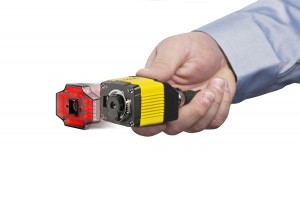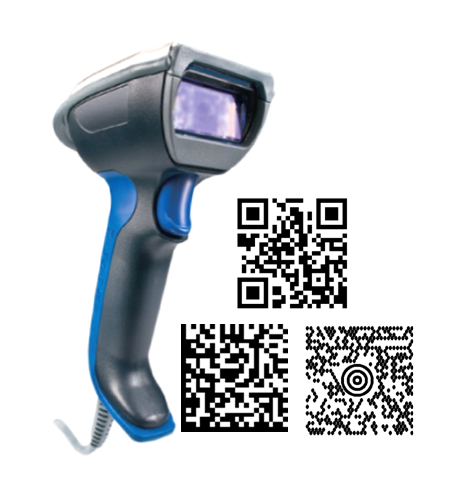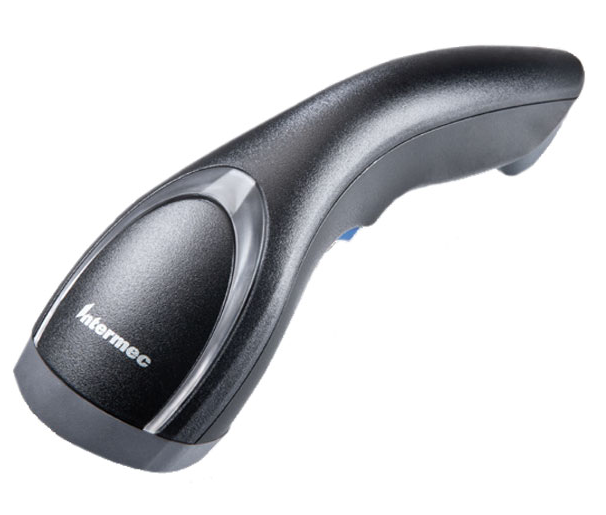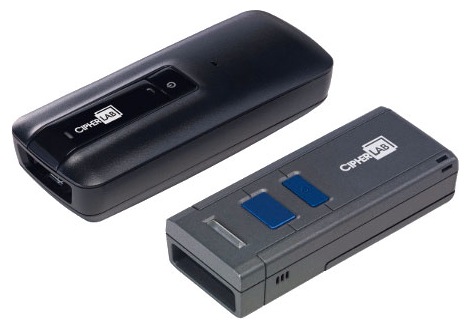The Next Generation Warehouse : Long Range Scanning and the Emergence of 2D Barcodes
Introduction
Today’s warehouses are rapidly evolving as they seek to keep up with a variety of new requirements and advancements in technology. Processes traditionally using 1-dimensional bar codes are becoming more accurate, more efficient, and more robust through the transition to 2D symbologies. Offering superior data storage capability yet compact in size, these 2D symbols are ideal for cradle-to-grave tracking of products and serialization. As imaging technology progresses, businesses are poised to take advantage of the benefits of implementing 2D while continuing to accommodate the long range scanning requirements typical in the warehouse environment.
Driving this transition is the growing need to track individual parts from assembly to shipment and beyond for information and traceability purposes, largely imposed by company-specific or legislative requirements. A 2D bar code can accommodate significantly more information than its 1d counterpart, and in a fraction of the space, making such traceability possible.
Historically, laser scanners have been the preferred technology in warehousing because of their speed, accuracy, and ability to read at long range. however, as 2D bar codes become more common and imaging technology matures, manufacturers are now discovering what imagers have to offer in terms of flexibility, traceability, and legislative standards compliance.
Cognex Adds Autofocus to Dataman 300
 Cognex Corporation, the global leader in industrial ID, today announced the addition of liquid lens optics for the DataMan 300 series of fixed-mount barcode readers. The new accessory allows any DataMan 300 reader to be easily upgraded from fixed focus to autofocus. Liquid lens variable autofocus technology is ideal for applications that require a large depth of field or when refocusing is needed after a product changeover.
Cognex Corporation, the global leader in industrial ID, today announced the addition of liquid lens optics for the DataMan 300 series of fixed-mount barcode readers. The new accessory allows any DataMan 300 reader to be easily upgraded from fixed focus to autofocus. Liquid lens variable autofocus technology is ideal for applications that require a large depth of field or when refocusing is needed after a product changeover.
The DataMan 300 intelligent tuning feature automatically selects the optimum settings for the integrated lighting and for the autofocus optics for each application. This tuning process ensures that the barcode reader will be set up to attain the highest read rates possible for 1-D, 2-D and direct part marked (DPM) codes. The liquid lens can also be adjusted with software or serial commands without having to touch the reader.
Imaging Moves Into the Mainstream
 Why 2D Imagers are Surpassing Laser Scanners for Bar Code Applications
Why 2D Imagers are Surpassing Laser Scanners for Bar Code Applications
Misperceptions about 2D imagers are changing fast, which is why 2D imagers are the fastest-growing category of bar code readers. Only a few years ago 2D imagers were (wrongly) considered a niche technology mostly used for reading 2D bar codes. Now they are becoming the technology of choice for most bar code applications, and lasers are on the way to becoming a niche technology. The reasons: 2D imagers are as fast or faster than laser scanners, can read all the same bar codes as lasers plus 2D symbols that lasers can’t, and can do much more.
Not only can 2D imagers read more bar codes than lasers – including QR Codes, Data Matrix and other popular 2D symbols – they can also do more than read bar codes. Imagers can take digital pictures, shoot video, capture customer signatures, scan documents and even process the scanned data. These capabilities, which are outlined in the graphic below, enable new business processes that are not possible with older-generation technology. In an era where workers are tasked with doing more – collecting more information, providing more documentation, being more productive, etc. – 2D imagers provide more flexibility.
2D imaging technology gives businesses the two things they need most from their bar code readers: outstanding performance in today’s applications, and investment protection to meet future needs. This white paper is a guide to 2D bar code imaging technology, including an overview of capabilities and how 2D imagers perform in traditional applications, the beneficial new business processes that imaging enables, and the advantages 2D imaging provides compared to laser scanners.
Continue reading »
Scanning at the Point-of-Sale: Keys to Improving the Customer Experience

Industry Need
What can customers get in your stores that they can’t get online?
Retailers who cannot easily answer this question risk losing business to e-commerce competitors – more than 3,100 U.S. retail stores closed in 2011 and more than 5,000 more are projected to close in 2012, according to published industry reports. Retailers who are answering the question successfully are focusing on creating an excellent customer experience. They are creating and enhancing customer loyalty programs, offering new services, seamlessly merging sales channels and providing exceptional customer service.
Creating a positive customer experience also requires satisfying the desire for immediacy. Successful retailers have products available for customers to touch, try and take home right away, without having to wait for shipment.
To create this experience, retailers need to keep their products on the shelves and their staff on the floor. It requires a workforce that is knowledgeable, flexible and highly responsive. Retailers should demand the same from their equipment.
CipherLab Adds a Brand New 2D Scanner to the 1600 Series Family
 With the new addition, the 1600 series is now able to fulfill the needs of a greater range of businesses, in more industries.
With the new addition, the 1600 series is now able to fulfill the needs of a greater range of businesses, in more industries.
CipherLab, a leading innovator in Automated Identification and Data Capture (AIDC) has announced a new addition to its data capture lineup – the new 1600 series 2D scanner. This model aims to meet the growing adoption of 2D barcodes in pharmaceutical, hospital and retail settings. Smaller and lighter than a mobile phone, with optional Bluetooth connectivity, the 1600 series 2D scanner is specifically designed to satisfy the needs in healthcare, field sales, and field service.
The 1600 series 2D scanner has been enhanced with more features that are surely to benefit businesses. In addition to the 2D imager, the increased on-board 4MB memory can store over 240,000 scans and data. The rechargeable Li-ion battery provides long working hours for all-day work, improving productivity. The scanner also supports a Bluetooth working range of 20 m (66 ft.), which facilitates operations that require instant data synchronization with the back-end system.
Wristband Formatting Best Practices
Key Considerations for Improving Patient Care
Bar coded patient wristbands are an excellent way for medical centers to improve the safety and quality of care while meeting industry mandates. To gain the most benefit, the information provided on the wristband must afford easy readability, and deliver the right information in the right way. Healthcare personnel who are starting to look at a patient ID solution need to know the key considerations of patient wristbands from a formatting perspective. This is especially crucial during the first 30 days of looking at a patient ID solution.
Like any technology or process, following proven best practices helps ensure a smooth transition to deployment and beyond. The purpose of this white paper is to help healthcare IT staff launch the right wristband system with the right format. Proper wristband formatting makes it easier for nurses and clinicians to perform patient care tasks so that there is no need for workarounds. The result is improved efficiency and quality of care—medical staff is more productive, there are fewer chances for errors, and nurses can provide more focused attention to their patients.
Continue reading »
Honeywell Retail 2D
Today, retailers face a new connected customer that expects a seamless and customized shopping experience across different channels, from websites to mobile applications to in-store. This new technology-empowered shopper uses the Internet and a smartphone to search, compare, evaluate, and buy products and services, and most importantly, to engage and interact with retailers in order to get tailored offers.
To meet their customers’ expectations, leading retailers are investing in new technologies and tools to capture and analyse customer behavior and align their offering with customer demands, especially in stores, where customers still make most of their shopping decisions. In-store staff needs to be empowered with new mobile solutions which improve their productivity, while helping them connect with their customers and provide personalized service.
Thanks to these new tools, retailers can capture, connect and embed the two critical dimensions of today’s retail strategy in their processes: customer insight and product information. This is what we in Honeywell call Retail 2D.




